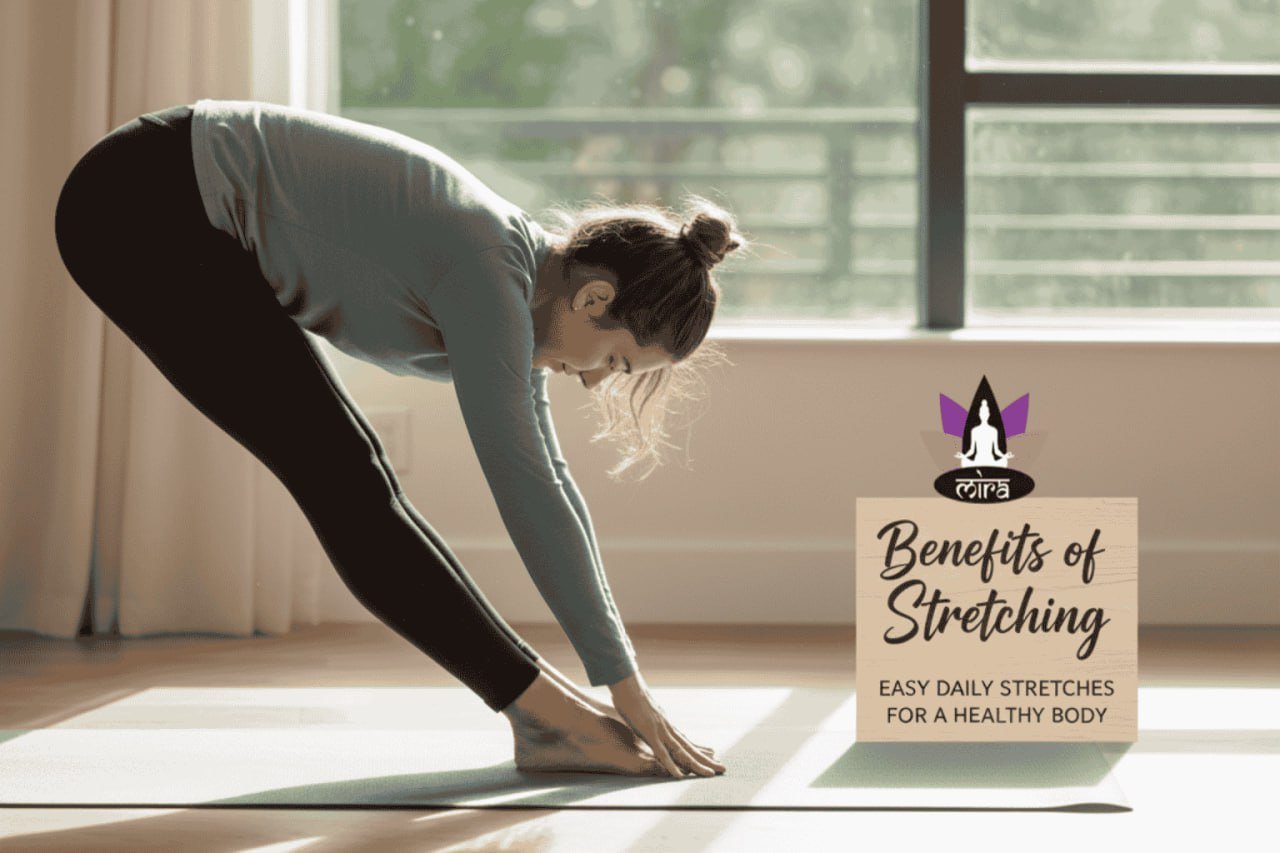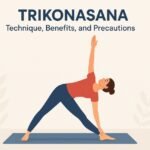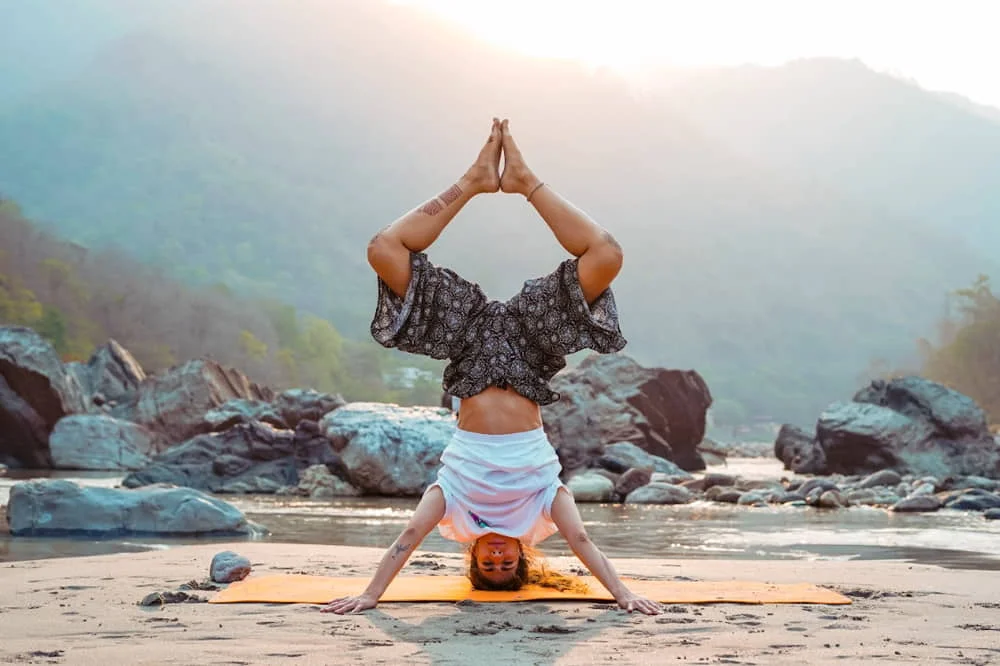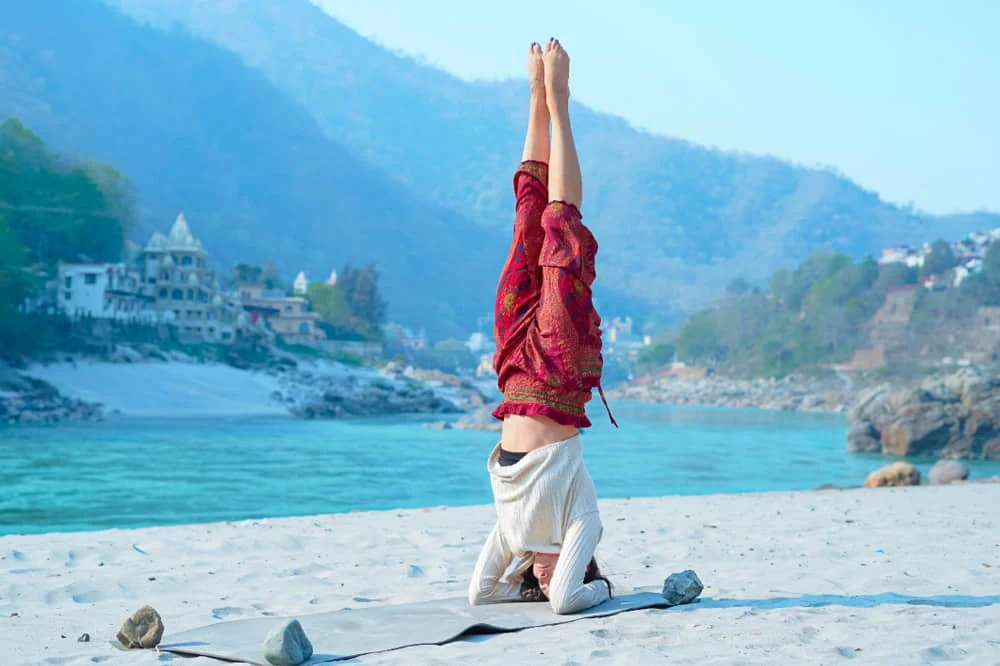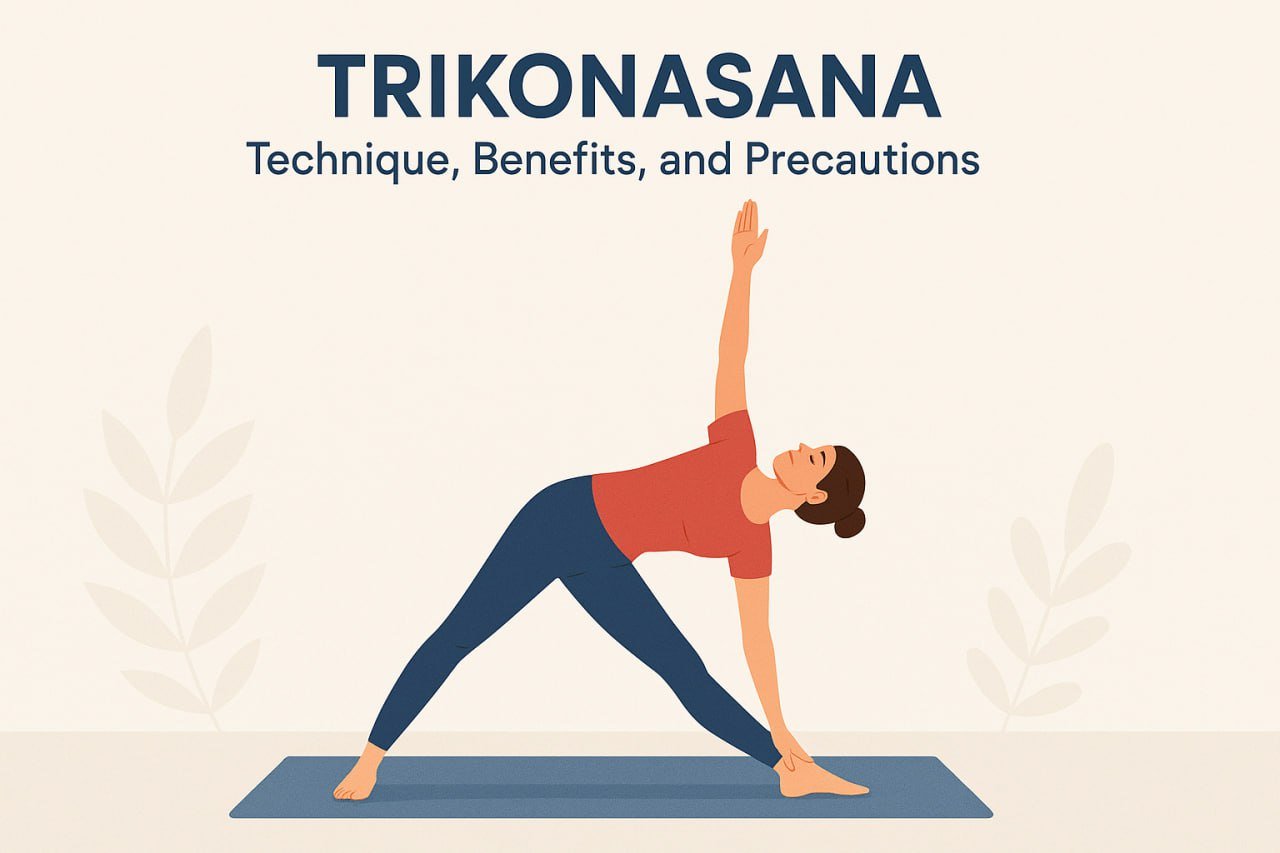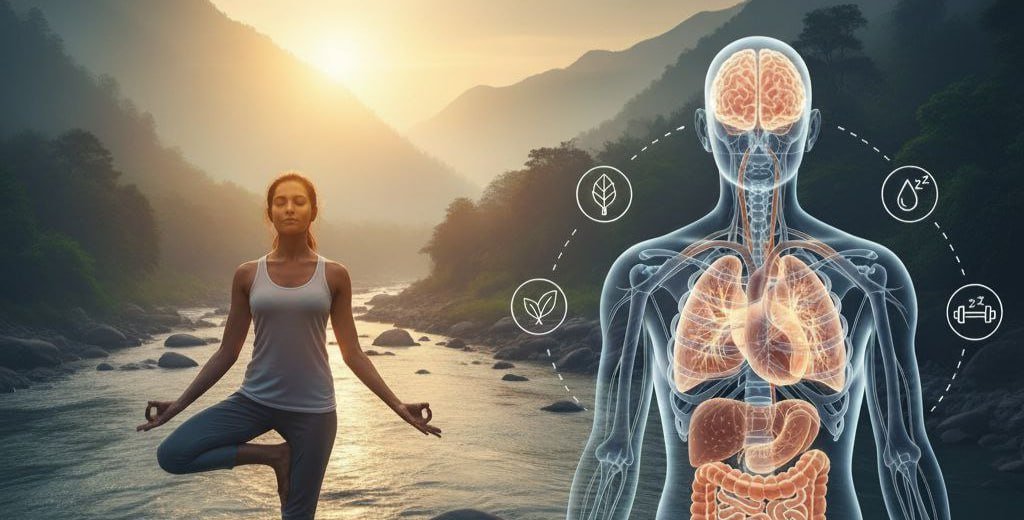Introduction
Stretching is one of the easiest ways to treat your body well. It is not only for athletes exercising in the gym—there’s something here for all of us. From improved posture to reduced back pain, from a more tranquil mind to enhanced athletic performance, stretching contributes to both physical and emotional well-being.
This blog discusses the importance of stretching, when it can be done, and provides some easy stretching exercises (such as lower back stretches, hip flexor stretches, sciatica stretches, and leg stretches) that everyone can start today.

Why Stretching Matters for Your Body
Maintain the flexibility and mobility of your muscles to avoid stiffness caused by prolonged sitting, such as 8 hours a day.
- Protects joints—Flexible muscles support joint movement.
- Boosts blood flow—Stretching will enhance your circulation.
- Reduces injury risk—prepares the body for sports or daily activities.
- Improves posture—Regular stretching counters hunching and slouching.
- Relieves stress—Assists with relaxing and calming the mind to help act as a stress reliever.
Kinds of Stretching
Static Stretching
The static stretch is the most popular type of stretch—it involves holding your position without movement for 15–30 seconds. This stretch is a nice and gentle way to lengthen the muscles, which is why it can be beneficial post-exercise when they are already warm. It enhances flexibility, reduces tightness, and is a great way to help your body relax after exercise. However, fitness experts recommend avoiding long static stretches before high-volume or high-intensity workouts, as they can temporarily reduce strength and interfere with performance. Static stretching is instead beneficial at the end of your workout or during an evening relaxation session to unwind and ease stress.
Dynamic Stretching
Dynamic stretching uses active movement to take your joints and muscles through their full range of motion. Like leg swings, walking lunges, or arm circles. These moves warm up the muscles and get the blood flowing, preparing your body for movement. Dynamic stretches, unlike static stretches, do not hold the stretched muscle at the end point; instead, they get your muscles moving and improving coordination before engaging in sports activities or physical work. They not only decrease the risk of injury but also improve performance.
Static Stretching vs. Dynamic Stretching. They each have their distinct role. Together, they form a well-rounded regimen that enhances flexibility and mobility while also promoting long-term physical health.
Benefits of Stretching
Stretching does much more than increase flexibility. Stretching builds muscle, keeps joints healthy, and reduces the risk of injury when exercising or engaging in everyday activities. It also increases blood flow, which helps oxygen and nutrients reach muscles more quickly, aiding in a faster recovery time and minimising stiffness. For individuals who sit for extended periods, stretching is particularly effective in improving posture and alleviating tension in the neck, shoulders, and lower back.
Stretching is just as potent on a psychological level. It eases tight muscles, soothes the nervous system, and reduces stress. Stretching also increases concentration, relieves muscular tension headaches, and helps achieve sleep quality. Just a few minutes of these daily stretches — such as leg stretches, hip flexor stretches, and sciatica stretches — can help improve flexibility and bring lasting relief.
Don’ts to remember before you start stretching
While stretching is safe and can be beneficial. But if you stretch the wrong way, “doing too much of a good thing” applies. Here is a list of some things you wouldn’t want to do:
- Don’t stretch cold muscles—always warm up with easy exercise, such as walking, before stretching. A cold muscle is more susceptible to injury.
- Don’t bounce during stretches—It is not advisable to jump while you stretch because the bouncing motion can cause strain and even small tears. Instead, hold each stretch steadily.
- Don’t overstretch—stretch to a point of mild tension, but not pain. Overdoing it can lead to muscle and joint injuries.
- Don’t ignore past injuries—avoid stretching an area that’s already sore, inflamed, or on the mend.
- Don’t rush—stretching is most effective when done slowly and mindfully, accompanied by deep breaths.
By avoiding these mistakes, you’ll enjoy all the benefits of stretching safely and effectively, whether you’re practising daily stretches at home or at a stretch zone session.
Daily Routines with Stretching
You don’t need hours—just 5–10 minutes a day of daily stretches can make a difference.
- Morning stretching—jump-start your body and loosen up stiff muscles.
- Pre-workout stretching—Employing dynamic stretching to prepare muscles.
- Post-workout stretching—Static stretches relax the muscles and aid recovery.
- Desk break stretching—undo back and neck stiffness during long work hours.
- Bedtime stretching—Gentle stretches prepare your body for better sleep.
Must-Do Stretch Exercises for Pain Relief and Flexibility

1. Lower Back Stretches (Knee-to-Chest)
- Lie on your back.
- Pull one knee toward your chest, keeping the other leg straight and extended.
- Hold for 20–30 seconds per side.
2. Hip Flexor Stretch
- Kneel on one knee, with the other foot forward at 90°.
- Push hips forward gently.
- Hold for 30 seconds per side.
3. Leg Stretches (Hamstring Stretch)
- Sit with one leg extended and the other bent against your thigh.
- Lean forward gently to touch your toes.
- Hold 20–30 seconds per side.
4. Sciatica Stretches (Pigeon Pose)
- Bring one knee forward on the floor, and extend the other leg back.
- Lean forward over the bent leg.
- Hold 30 seconds per side.
5. Child’s Pose Stretch
- Kneel with hips on heels.
- Stretch your arms forward and rest your forehead on the floor.
- Hold for 1 minute.
6. Calf Stretch
- Stand facing a wall with one foot back and your heel down.
- Lean forward gently.
- Hold 20–30 seconds per side.
7. Shoulder and Neck Stretch
- Roll your shoulders slowly forward and backwards.
- Tilt your head side to side.
- Repeat for 30 seconds.
8. Quadriceps Stretch
- Stand tall, bend one knee, and pull your ankle toward your glutes.
- Hold 20–30 seconds per leg.
Stretching for Beginners: How to Start
- Warm up by performing light stretching drills for 5-10 minutes.
- Do a little bit of walking or jogging to warm up before you stretch.
- Hold each stretch gently—avoid bouncing.
- Focus on steady breathing.
- Join a stretch lab or stretch zone for guided assistance.
The Long-Term Benefits of Stretching
Its benefits are long-lasting when stretching is applied consistently:
- Improves balance and mobility.
- Prevents falls and injuries.
- Lessens long-term back, neck, and joint pain.
- Performance on the workouts and in sports.
- Lowers stress and mental fatigue.
Stretching with Mira Yogashala in Rishikesh
Suppose you want to experience stretching under the guidance of an expert. In that case, Mira Yogashala, one of the best yoga schools in Rishikesh, offers specialised stretching sessions. Their programs combine traditional yoga techniques with modern stretch exercises to improve flexibility, relieve pain, and promote overall well-being. Whether you are a beginner or looking to deepen your practice, Mira Yogashala offers a serene environment for daily stretches and learning proper alignment, making it the perfect destination for anyone seeking mindful body care in Rishikesh.
You can join us by visiting:
- 100-hour Yoga Teacher Training course in Rishikesh
- 200-hour Yoga TTC in Rishikesh
- 300-hour YTTC in Rishikesh
- 500-Hour Yoga Course in Rishikesh
You can also visit our Retreat Programs in Rishikesh
Conclusion
Stretching is more than just a warm-up—it’s a daily practice that loosens muscles, improves posture, makes you strong, and keeps your head on straight. From hip flexor stretches to sciatica stretches and lower back stretches, these are easy moves that can help you make the most of your day. From the comfort of your home to the stretch lab and even a stretch zone itself, just a few minutes of stretching each day can elevate your health and quality of life.

